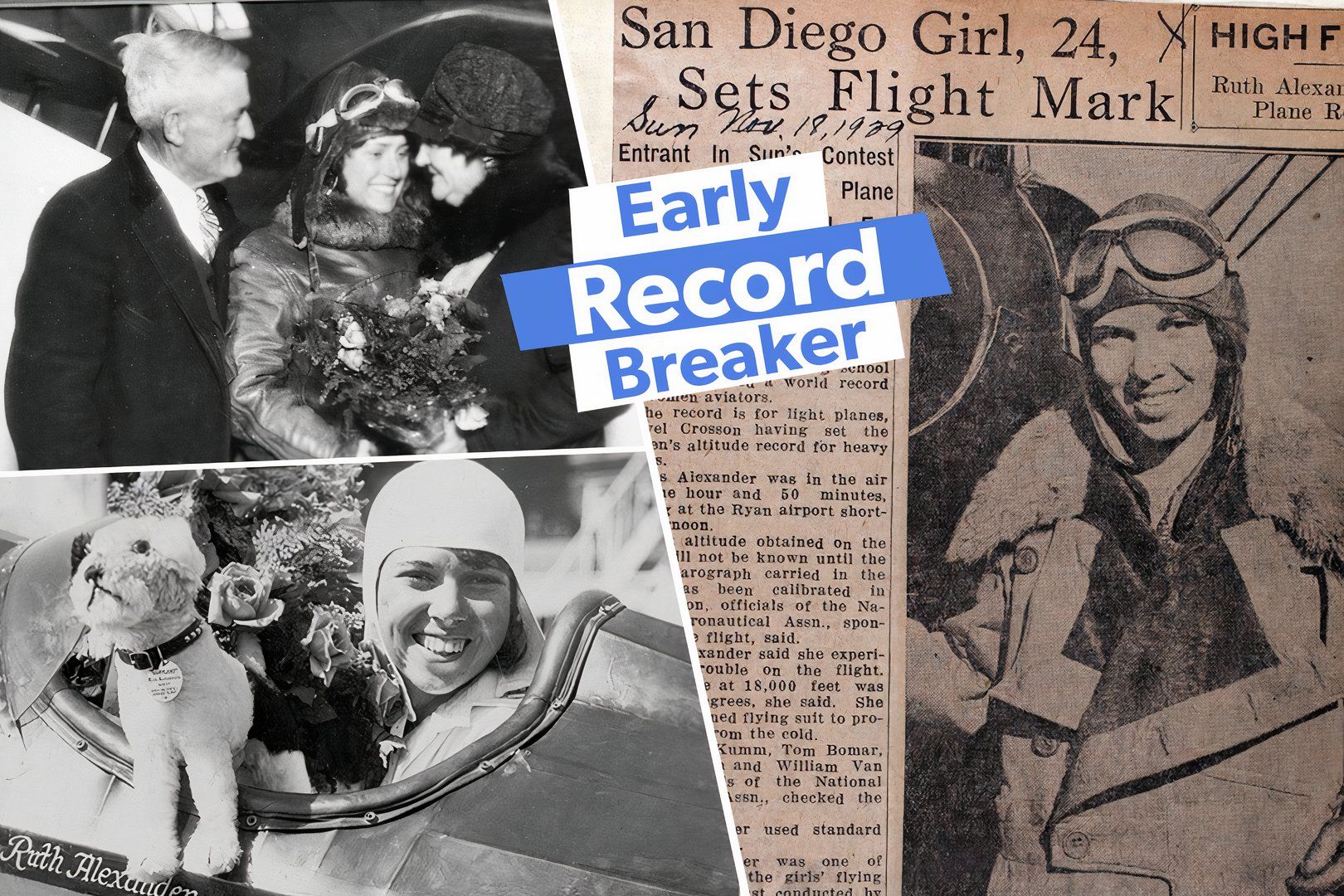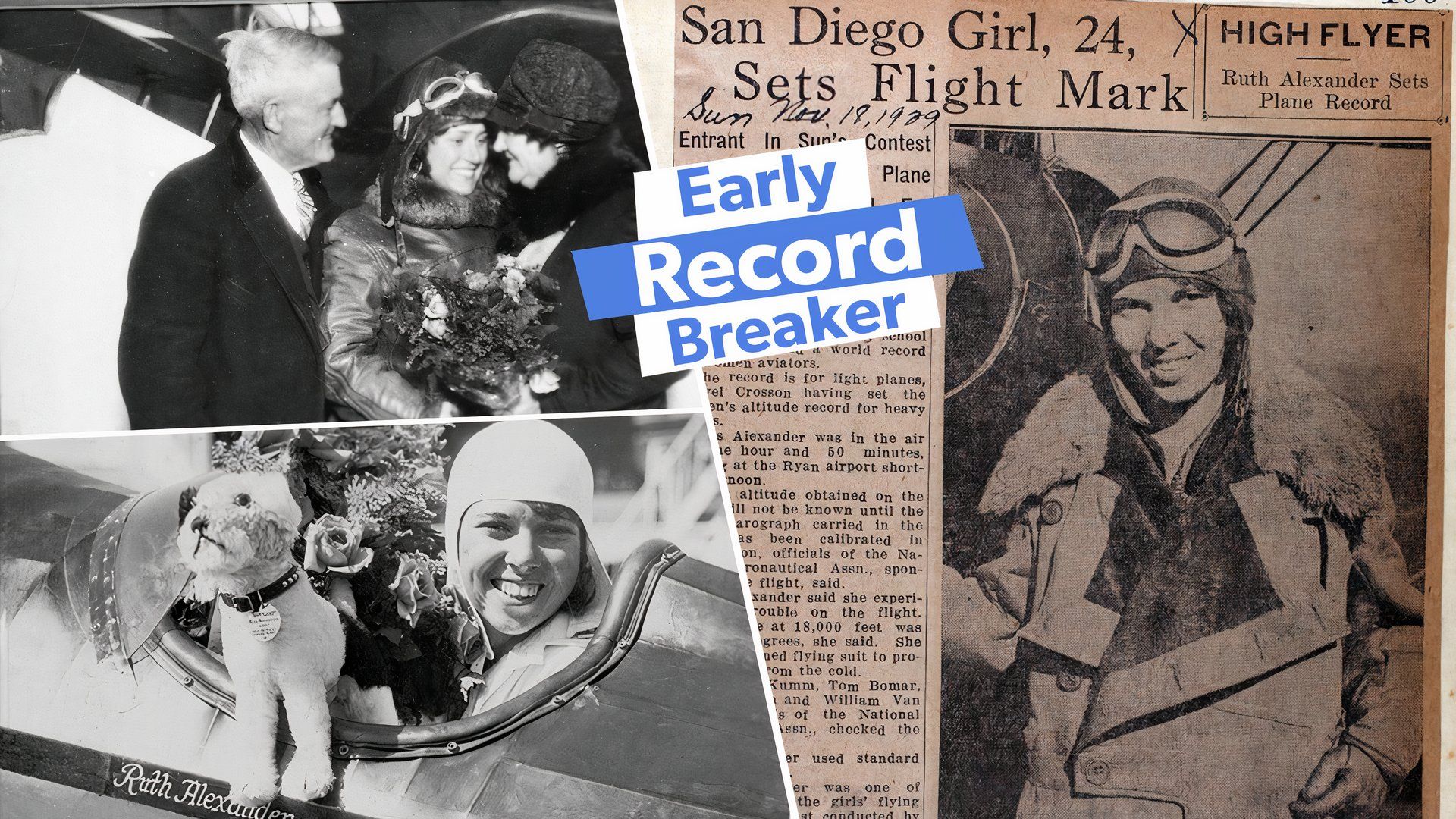
Ruth Alexander, a pioneering woman in early aviation, reached new heights, both physically and metaphorically, about a century ago. Her bold ambition drove her to set several altitude records, establishing her legacy as an aviator who defied the expectations of her day. As the anniversary of her tragic death approaches, her amazing accomplishments and services to aviation deserve further recognition.
Early years: A passion for flight
Ruth Blaney Alexander was born in the early 1900s and grew up at a thrilling time in aviation history. Aviation had captured the public’s interest only a few years after the Wright brothers’ maiden flight, and brave pilots were seen as modern-day adventurers. However, like other women of her period, Alexander overcame restrictions and the risks of flying to pursue her dream.
Alexander’s path into the world of aviation began in August 1928 when she entered a contest to win a course at the T. C. Ryan Flying School. There, Alexander found a place where she could hone her skills and develop her natural talent for flying. Her determination quickly set her apart, and she wasted no time in chasing new heights—literally.
Soaring to new heights
By November 1929, she had completed ground school at Pacific Technical University, earned her Fédération Aéronautique Internationale (FAI) and National Aeronautic Association (NAA) licenses, and set an altitude record of 18,000 feet for women flying light planes. In 1930, at a time when the skies were still largely the domain of men, Ruth Alexander set a number of records. She started breaking global altitude records for female aviators in the summer of that year, which was one of her greatest accomplishments. Alexander broke the record for women’s altitude on June 12, 1930, when she reached a height of 15,718 feet (4,790 meters).
Just a month later, on July 4, 1930, Alexander broke her own record by flying to 21,000 feet (6,400 meters) in a tiny, open-cockpit aircraft, the Nicholas-Beazley NB-3. However, Alexander wasn’t done yet. On July 11, 1930, she made it to an incredible 26,600 feet (8,108 meters), setting a new record for female pilots and surpassing the altitudes reached by male pilots at the time. This accomplishment placed her among the ranks of the most elite aviators in the world, an achievement made even more impressive considering the limitations of early aviation technology.
In the same month, Alexander proposed a “three flags flight” from Mexico to Canada, aiming to break aerobatic pilot John Gilbert “Tex” Rankin‘s speed record. She aimed to become the first woman to make a round-trip flight from Canada to Mexico and the first woman to fly from Canada to Mexico nonstop.
This flight set three records:
- Women’s distance over a specified air course
- Women’s speed record over the same course
- Women’s tri-nation flight
The physical and technological challenges
It was not just about personal ambition. Alexander’s record-breaking flights also showed the physical and technological challenges that aviators in the 1930s faced. Flying at high altitudes in unpressurized aircraft was dangerous. These flights were more of a test of endurance than a show of flying talent due to the cold temperatures and low oxygen levels.
On these record-breaking flights, Ruth Alexander faced sub-zero temperatures, and the thin air strained both her body and her aircraft’s performance. The dangers were great at 26,600 feet: engine reliability was lowered, and the body’s capacity to use less oxygen was seriously jeopardized. The fact that Alexander pushed herself to these heights with limited equipment and in such dangerous conditions speaks to her incredible bravery and determination.
The loss of a star
Sadly, just a few months after her record-breaking summer, Ruth Alexander’s promising career was cut short and brought to a tragic end. On the night of September 18, 1930, Alexander died in a plane crash during a routine night flight over San Diego. While the precise reason for the crash is unknown, low visibility and a technical malfunction are believed to have played a role. She was just 26 years old.
The aviation world, which had watched her rise from a student pilot to a record-setter in such a short time, was shocked by her sudden death. She had demonstrated to the world her extraordinary courage and talent, in addition to her ability to fly higher than most men. Ruth Alexander’s life was sadly cut short, but her contributions to aviation are still noteworthy.
Paving the way for women
Alexander’s achievements demonstrated that women could compete on an equal footing with men in the difficult and risky field of aviation during a time when the industry was still developing and social expectations for women were restrictive. Her altitude records helped to inspire not only future aviators but also contributed to the growing acceptance of women in fields previously dominated by men.
Although she may not be as famous as other female aviation pioneers like Amelia Earhart
, Jacqueline Cochran, and Bessie Raiche, her story is still an important part of aviation history and an inspiration to aviators, explorers, and everyone who dares to dream of breaking barriers. She remains a symbol of determination, courage, and the spirit of adventure.
A collection of her documents is archived at the International Women’s Air & Space Museum in Cleveland, Ohio. It serves as a reminder of the risks that pioneering aviators faced in their efforts for advancement and exploration, as well as providing an opportunity to consider her legacy and the importance of her accomplishments.

